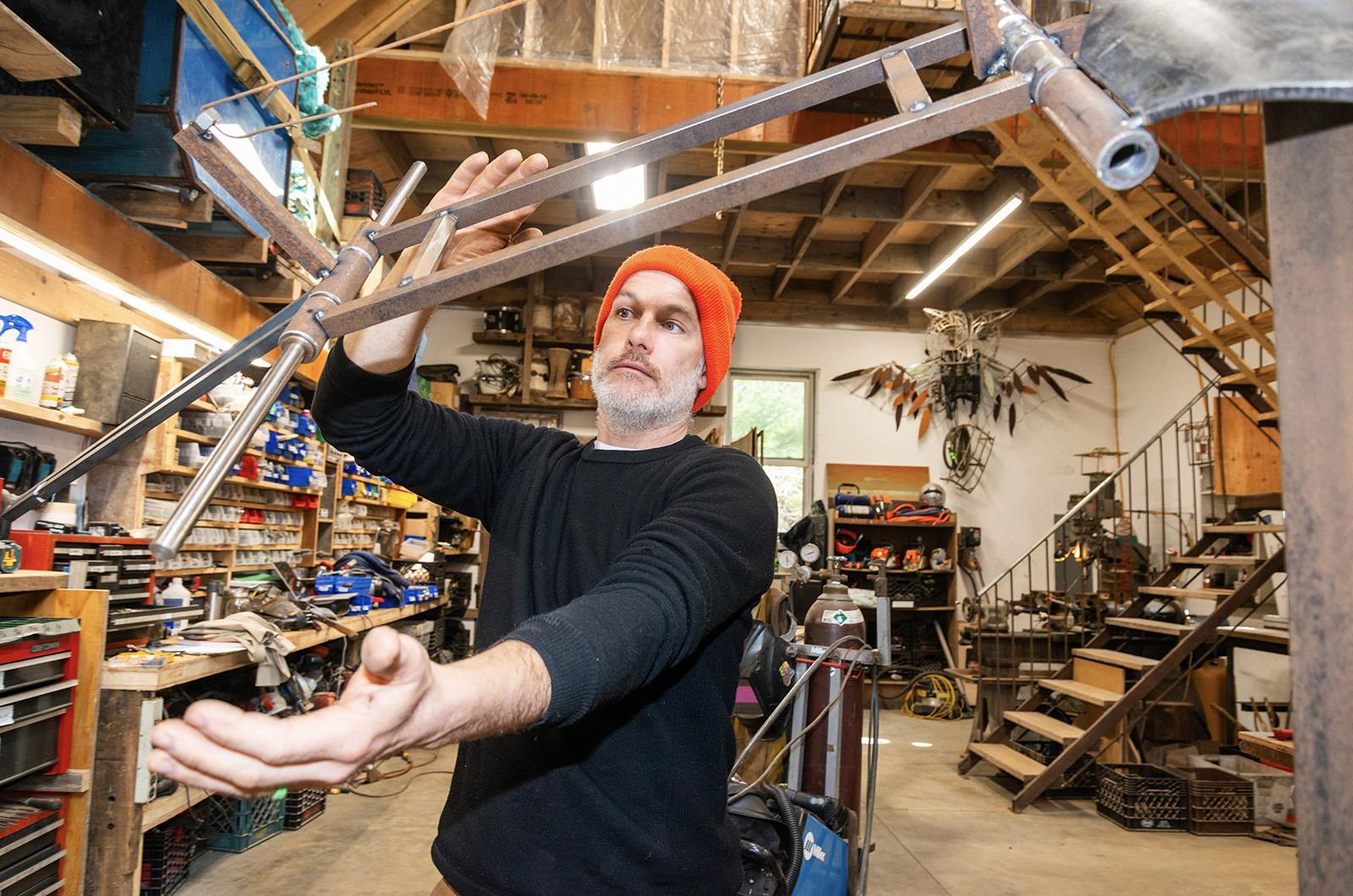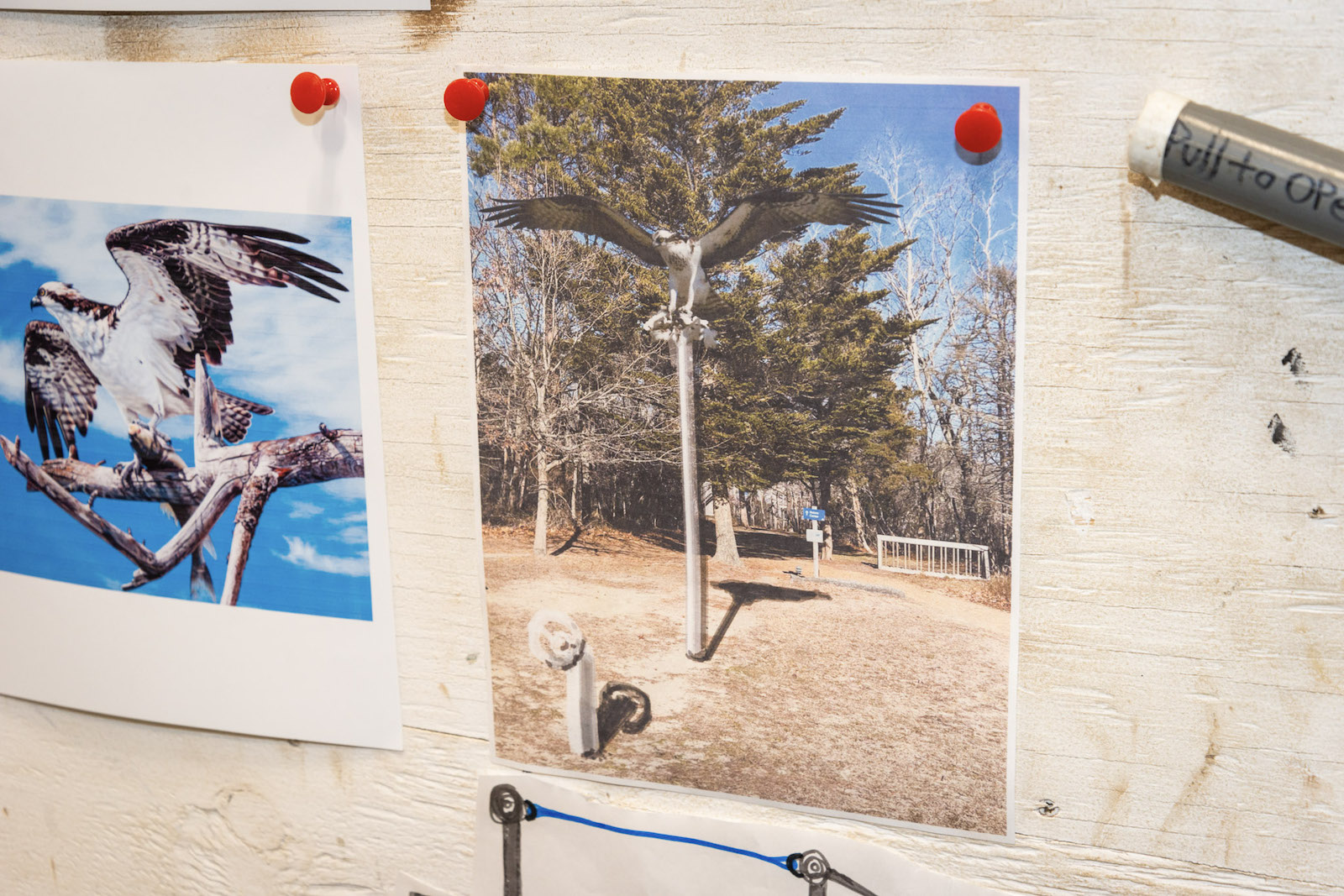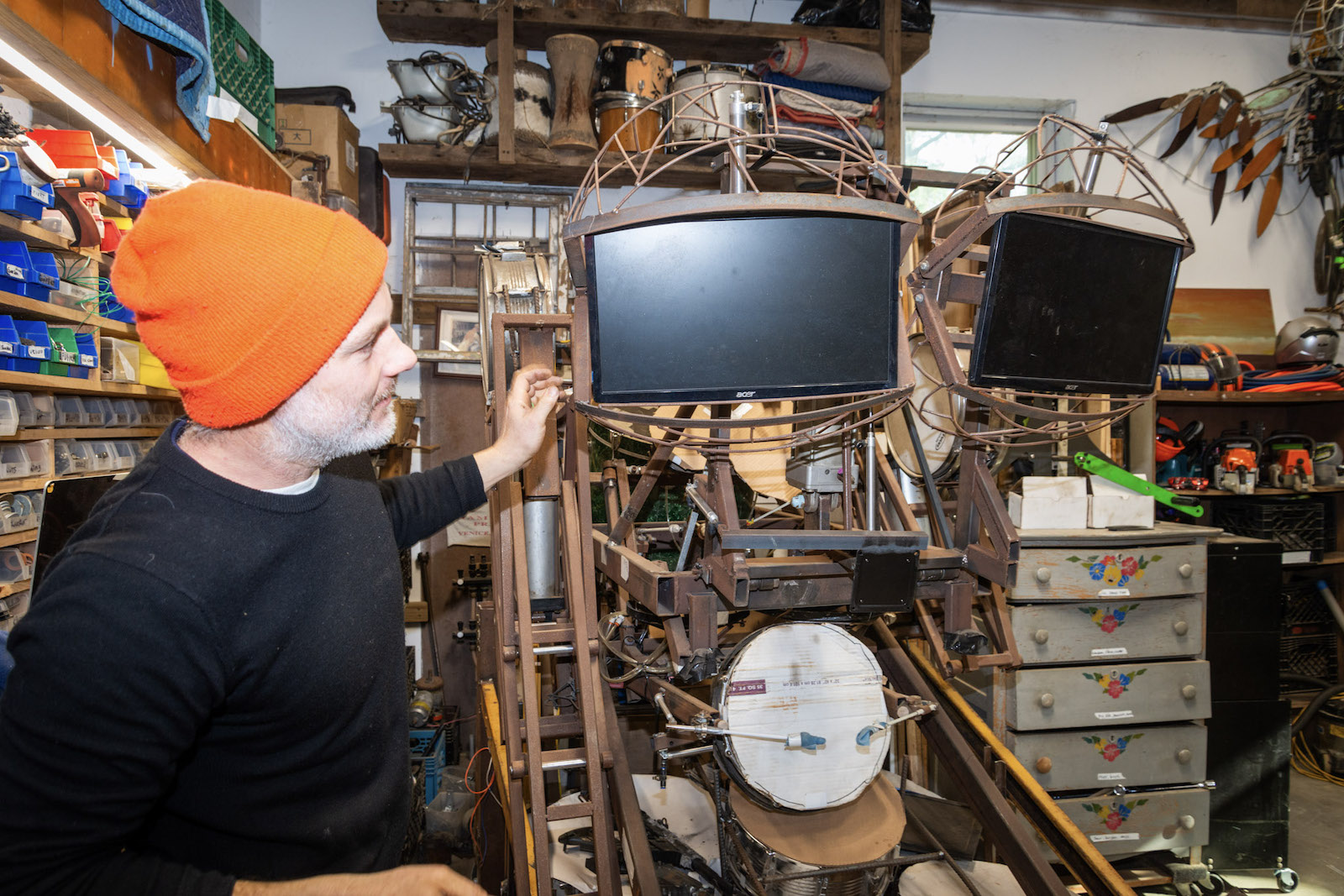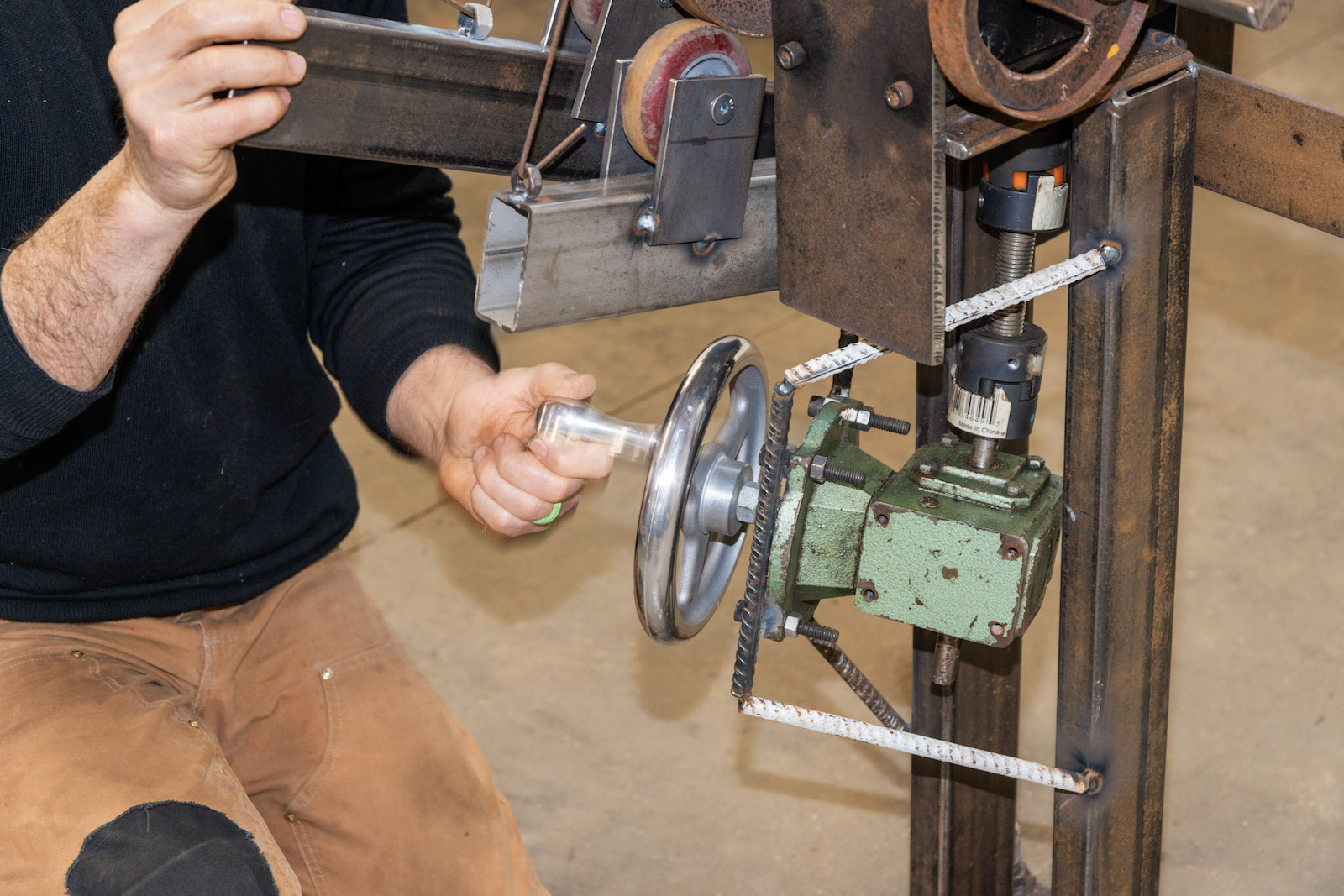Just three days in to creating his third kinetic bird sculpture, Tim Laursen has already figured out how to make the wings flap.
“Taking something from nature and breaking it down into mechanics. I love that. It’s what I do,” he said, on a recent tour of his West Tisbury studio. “It’s mechanical movement, inspired by nature.”
Much of his inspiration is still splayed out on his work table, his tools of the trade presenting the organized chaos of creation: flywheels, pencils, a compass, cardstock, three drills with different attachments, a metal hammer, a rubber mallet, an array of awls and a box of multicolored shims.
Nearby, rusted bits of steel plate scrap cover a table, variable metal circles and polygons marked by probing cuts from the sculptor’s metal chop saw.
Mr. Laursen’s monumental artwork — from mechanical drummers to towering wooden arches to robotic Hindu deities — have long cemented his reputation in the Vineyard art community. But for the artist himself, perhaps the most impactful of his creations is the Island workshop which now houses his work, past and future, a shop he built on friend Willy Mason’s property over 2019 and 2020.
“It’s a different shop than most on the Vineyard because I love to do all sorts of different types of work,” he said.
Mr. Laursen had relocated from the Vineyard where he grew up to Brooklyn, N.Y., living there and creating art for the preceding eight years, before Mr. Mason suggested he return and build a new workshop on his land. Then tragedy struck, when Mr. Laursen’s brother was diagnosed with cancer in 2018 and died the next year. The process of building the workshop became a therapeutic practice for Mr. Laursen.
“There was nothing better to take my mind off everything,” he said.
Nearly every stage was done by hand, from design to execution. With help from Mr. Mason, he even built a 30-foot crane, fabricated from blue scaffolding, to lift up the building’s trusses.
“I just wanted a big, flat floor,” Mr. Laursen said, of the open-concept design, with the space able to contain huge works like his recent Aquinnah shade structure.
Benches ring the perimeter of the building, work tables are set on wheels, and if he needs more space the stairs to the attic can be folded back on hinges. The creation of the new workspace, Mr. Laursen said, has heralded what could be the start of a new creative era for him.
“It’s a matter of working on my dream projects and working on things that are commissioned,” he said.
After spending much of 2022 creating the wooden Aquinnah structure, Mr. Laursen has returned to the medium of steel, first spending time on long-term robotics projects before beginning work on his third mechanical bird sculpture.
“The goal is a kinetic osprey sculpture to commemorate what Felix Neck has done for the osprey,” he said, of his current project. “It’s been 10 years since I did the last one . . . . I feel like this one is going to be the most refined.”
Mr. Laursen does not usually revisit an old project form, preferring to keep things creatively fresh. But there are benefits to knowing where you have been. While the research and development phase of a complex mechanical sculpture often takes weeks for him to complete, this time he was able to settle on the mechanism for the wing motion in just a few days, transforming a small pile of scrap into two hand-powered prototypes for osprey wing motion.
“It’s straight lines, scrappy wood. And then you make it move. And it’s elegant,” he said, while operating one of the prototype wings.
Once he has selected his mechanism — this time Mr. Laursen chose a lateral movement different from past sculptures — he began translating that motion into the medium of metal.
Crouched on the floor by the spare metal skeleton he had welded thus far, Mr. Laursen began cranking a gearbox to begin his demonstration of the wing. Motion from his arm transferred into a spinning, irregular metal ovoid, pressing down a lever attached via metal ligament to the skeletal wing, pulling it up and down on each uneven rotation.
“This is like mathematics you can feel,” he said, of the design process. “I love that people think it’s complicated, but once you get it, it’s pretty straightforward.”
After completing the mechanical parts of the project, Mr. Laursen will move on to the decorative elements, giving it “the full feather treatment,” before mounting it eight-feet high at Felix Neck.
As for what comes next, Mr. Laursen isn’t sure, but he knows it will be big. In one corner of his shop, for instance, a gargantuan hydraulic drumming robot called the Green Man sits in wait. If he can connect with an arts-patron, he said, he has aspirations to bring the first Vineyard-made construction to Burning Man.
Meanwhile, now based in his Island workshop, Mr. Laursen has found his creativity renewed by his homecoming.
“I am so inspired by the craftsmen here,” he said. “One of the main reasons I moved back is there’s so many people doing so much amazing work.”










Comments (2)
Comments
Comment policy »